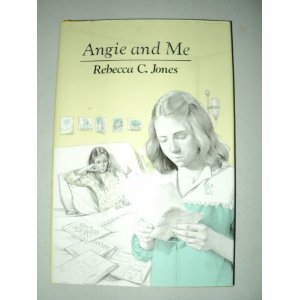Living as an Adolescent With Arthritis
The first in a series of posts celebrating the launch of the Arthritis Research UK Centre for Adolescent Rheumatology
Many people are under the impression that Arthritis is something that happens to you as you get older; a few achy bones in the winter months, knees cracking, stiff fingers… Yet there are approximately 15000 children and young people living with some form of Arthritis in the UK alone. These conditions don’t just cause a few aches and pains; they can be seriously debilitating, causing joint damage, pain and stiffness, fatigue, anaemia, nausea, fevers and in some cases systemic symptoms, such as rash and internal organ involvement. In short, they make a child or adolescent feel extremely unwell. And this isn’t something that is easily treatable either. It would be lovely to think that a simple course of tablets would make it all go away, but most of the time these youngsters have to face the realisation that they will probably be dealing with their condition for the rest of their lives.
There are some lucky ones that grow out of their Arthritis and into remission; for a while I thought I was one of them. I was diagnosed with Reactive Arthritis at the age of 3, but by the age of 8 was back to being symptom free and leading an active childhood. Then at the age of 14 I was struck down again. Symptoms came on quickly, like a bulldozer knocking all youthful life and energy out of me. Not only was I in excruciating, body-wide pain that meant my parents couldn’t even comfort me with hugs, I was too weak to climb the stairs and eventually to lift the duvet off myself, never mind get out of bed. And that’s where I spent most of my time, sleeping; yet never able to shift the feeling of sheer exhaustion. Food stopped being a priority. I was constantly nauseous and if I did try and eat was usually sick, so I would sleep through mealtimes too.
Getting a diagnosis was hard. Even doctors didn’t seem to recognise that it was possible to get Arthritis at such a young age. If we’d had a pound for every time we heard the term ‘growing pains’ we’d have been able to treat ourselves to a nice holiday! At that age you still have complete trust in the adults around you; if professionals tell you that it’s growing pains, then they must be right. I started to wonder if I was doing something wrong, if it was all in my head or I was making a big deal out of nothing. Again and again they asked if I was happy at school, which I loved. Depression was mentioned a lot and I felt mortified. Surely, that must mean they did think it was all in my head! But it didn’t make sense; yes, I felt fed up but wouldn’t anybody be fed up with constant pain and fatigue? A couple of months earlier I’d been a happy, active teenager loving every minute of my life. However, convincing them of that was hard work.
I was eventually referred to a Rheumatologist – an adult one initially – and I remember sitting in the waiting room full of older people with wheelchairs and twisted finger joints, wondering if that was going to happen to me. Once they realised something really was wrong, I was referred to Manchester Children’s Hospital. It took five months of hospital admissions and many, many tests, but eventually I was diagnosed with Dermatomyositis; five years later, at the age of 19, this was changed to Still’s Disease (Systemic Juvenile Idiopathic Arthritis). My family and I were relieved to have a diagnosis but scared as to what that meant for my future. I didn’t fully understand the implications at that time. I thought it would be a case of treating it and making it go away for good so I could get on with my life. Nobody really prepared me for the fact that I would probably have to deal with it for the rest of my life.
I missed a whole year of school (a topic I’d like to cover in another post), but saw my friends from time to time. I talked to them about my symptoms and the medications but the word Arthritis was never mentioned. I wasn’t ashamed exactly, but I was embarrassed. I knew that people would associate it with an old persons disease, didn’t want them to see me differently to the person I’d been before.
Over the next few years I started college and met new people. I was still extremely poorly, both from the illness and from the high dose of Methotrexate I was taking. Most of the time I could barely walk because my knees were as big as footballs; I was having them drained and injected with cortisone every 4-6 weeks and spent every few weeks in hospital receiving infusions of Immunoglobulin. Yet somehow I managed to keep my illness under wraps and put on a front to the world; I didn’t talk about my illness to anybody, it seemed easier to keep it to myself and carry on somehow. I often struggled in silence, but it must have seemed better than the alternative, to not being accepted for who I was. I guess I was just being your typical, image-conscious teenager. But even now, I don’t know how I managed.
Eventually, I started to realise that I wasn’t doing myself any favours in hiding my illness from the people around me. I would often have to refuse fun activities or cancel things with friends at the last minute and I wanted to explain why, so that I didn’t just look like a lousy friend. Plus I was spending so much time in hospital, often quite seriously ill, that it was getting harder to hide! Not that I started shouting it from the rooftops, but I did at least start to confide in the few people that I trusted, a little bit at a time.
Still, even then there was one word that I avoided using – Arthritis.
When asked about my illness I would describe it as an auto-immune condition; that my own immune system was attacking my body – my organs and my joints too, hence the surgical scars. Sometimes I’d draw a comparison with Lupus, as a lot of people had heard of that but didn’t all associate it with Arthritis. It was all the truth, but I was aware that I was doing everything I could to avoid admitting to Arthritis. Most of the time, I downplayed it as much as possible. I didn’t want to be the sick or disabled one, because I have been disabled ever since that bulldozer came at the age of 14. Yet it’s only very recently, in my late twenties, that I have been more honest with people as to the reality of my illness and accepted it myself. I always dealt with it well, but never really accepted it.
I tried to have as ‘normal’ a teenage life as possible – I went to college and university, I had jobs when I was well enough, went clubbing with friends and had boyfriends (issues I’d like to post about in their own right). It was difficult at times, I won’t lie. My life has revolved around hospital appointments and admissions, blood tests, medication and so on. I always felt ten steps behind everyone else and much younger and less independent than a lot of my peers, plus of course I did have my physical limitations, which at times left me feeling frustrated and isolated. But I tried not to dwell on things too much and learnt to adapt, pacing myself, getting plenty of rest, planning activities to within an inch of my life and accepting that I needed help sometimes. It’s a huge learning curve and takes time; I’m still having to adapt and readapt even now, as my Still’s Disease loves to throw new symptoms and challenges my way every now and again.
I turned thirty this year and although my illness is proving particularly difficult to treat and I’m going through a rough time, I am happy with my life and with who I am. I have my low moments, but I think that’s only natural. Sometimes, I do look back and feel sad that so much of my younger life was spent in hospital, going through some atrocious things and of course I often wonder where my life would have taken me if I hadn’t become ill at 14. But I know I could drive myself mad thinking that way; we can’t change the hand life deals us, we just have to make the most of it. Besides, I wouldn’t be the person I am today if I hadn’t been through all that I had.
I also consider myself very lucky to have been diagnosed when I was. I was one of the last in the era when only the oldschool drugs were available; when it was likely that having Arthritis as an adolescent would leave you with multiple deformities and joint replacements before adulthood. Then suddenly, along came the biologic drugs and changed all that, meaning it is now much easier to prevent joint (and organ) damage before it occurs. There are more and more drugs being developed all time and with the help of places like Arthritis Research UK’s new Adolescent Rheumatology Centre, there will be more research into how these can benefit younger patients sooner, as well as into the long term consequences of having the disease at such a young age.
All of which will hopefully help Rheumatologists get onto the successful treatment of Juvenile Arthritises faster than ever and hopefully lessen the impact these diseases have on our lives in the long term.
And who knows, maybe one day we’ll even find a cure 🙂
Wishing you all well,
Laura
Ps. Please return for my second post on Adolescent Arthritis, ‘Family and Friendships’.
———————
Links:
The Arthritis Research Centre for Adolescent Rheumatology
New Research Hope For Teenagers With Arthritis (Press Release)
Growing Up With Arthritis: Stories From Young People With Arthritis





